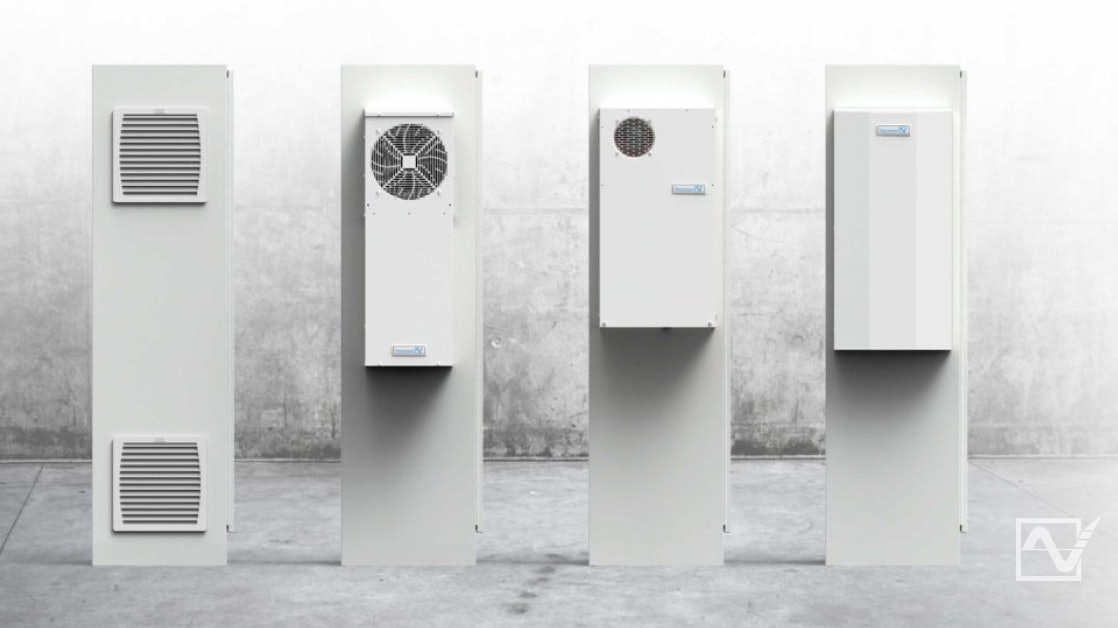Manufacturing facilities’ electrical enclosures can house hundreds of thousands of dollars in high-performance drives and electronics critical to production processes. These critical electrical components generate a significant amount of heat which, if not managed properly, leads to premature product aging and failure, shutting down systems and resulting in unnecessary downtime.
Outfitting electrical enclosures with the correct cooling technology for your specific application is critical. Considerations for thermal management include heat load, ambient temperature range, presence of particulates or debris, enclosure location, material and more.
Unfortunately, most manufacturing facilities lack a proper Thermal Management Plan to protect and extend the life of their equipment. As a result, manufacturers suffer significant financial losses each year. In most cases, these losses are preventable with a well-designed Thermal Management Plan.
Pfannenberg Can Help Develop a Thermal Management Plan
Pfannenberg has over 65 years of experience working with manufacturers to reduce costs and improve uptime through thermal management planning. A good thermal management plan starts with a plant survey to evaluate the needs of the specific facility.
A thermal management program from Pfannenberg can help:
- Verify sizing of cooling method meets the thermal loads of enclosures
- Reduce electrical costs caused by poorly maintained air conditioners
- Create a Preventive Maintenance plan
- Recommend the correct thermal technology for challenging applications
- Identify critical equipment and put steps in place to reduce downtime
Pfannenberg offers a variety of thermal management products tailored to meet the needs of different manufacturing environments.
Air to Air Heat Exchangers
Pfannenberg’s PKS 3000 Series Air/Air Heat Exchangers use its Kinetic Cooling System to exchange and remove heat from electrical enclosures using ambient air. This is a solution for applications with humid ambient temperatures or dirty air where reductions in maintenance are critical.
Available in five models, these coolers are designed for indoor, outdoor, and remote applications, as well as washdown applications that require a closed-loop system to protect electronics.
Air to Water Heat Exchangers
Pfannenberg Air/Water Heat Exchangers are suitable where ambient temperatures are high, or for washdown areas of the plant with high amounts of particulate. Their maintenance-free design allows for easy servicing and flexibility in installation, whether internally or externally.
They are highly energy efficient, utilizing a supplied water source to remove heat, which is the most effective method for process heat removal. With high cooling capacities ranging from 2,218 BTU to 34,121 BTU, they are engineered to ensure safe and efficient cooling of enclosure electronics, making them an ideal choice for a variety of industrial applications.
Cooling Units
Pfannenberg Cooling Units offer a closed-loop cooling system to prevent critical temperature fluctuations and avoid overheating. The units effectively seal out ambient air, ensuring that clean, cool air is recirculated throughout the enclosure. These units can be used when the required internal temperature is equal to or lower than the ambient temperature or when the ambient air is heavily contaminated with oil or conductive dust and higher ingress protection is necessary.
Filterfans
For less demanding environments, Filterfans offer a cost-effective solution to manage enclosure temperatures. With tool-free installation and superior filter design, the folded structure provides unrivaled airflow that guarantees Nema Type 12 protection while extending the filter’s lifetime 300% longer than conventional filters.
With UL Listed Certification and the highest airflow and protection, Filterfans are the ideal solution for clean, non-hazardous environments as long as the ambient temperature outside the enclosure is lower than the enclosure temperature.

